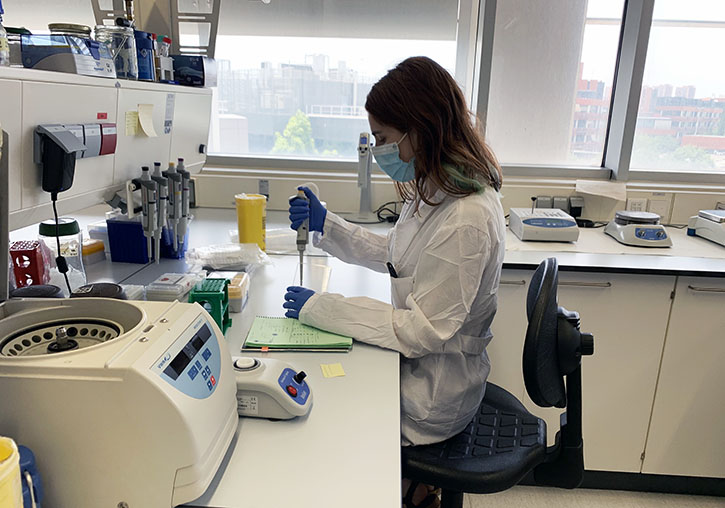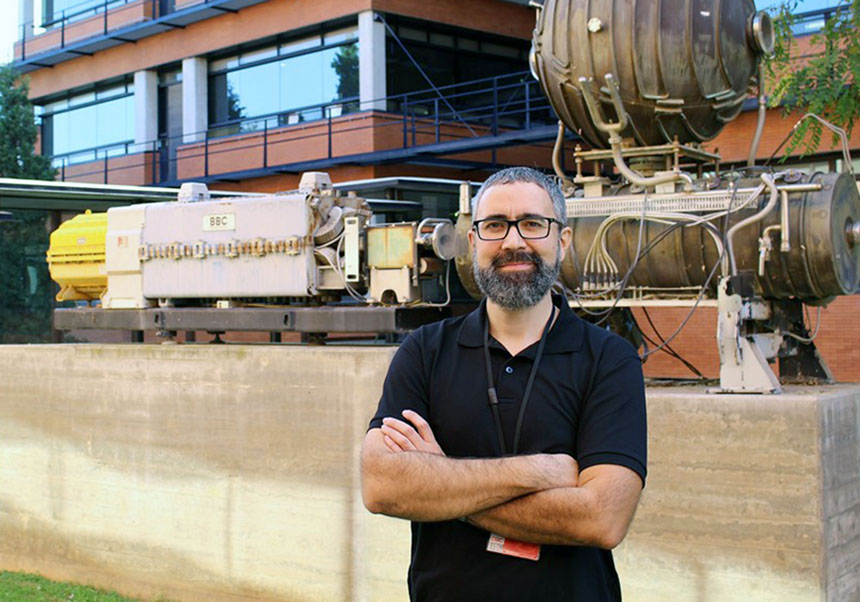The University of Valencia and the CSIC patent a method to detect the COVID-19 virus and other pathogens using CRISPR
- Science Park
- June 23rd, 2022

A research group from the Institute for Integrative Systems Biology (I2SysBio, UV-CSIC) has developed a method to detect viruses such as SARS-CoV-2, which causes COVID-19, using the CRISPR gene editing technique. The developed system combines the speed of antigen tests and the precision of PCRs. Its versatility allows detecting other types of infections and even mutations and biomarkers in humans.
Specifically, this novel system allows the detection of both various regions of the same virus and different types of coronaviruses and combines the speed of diagnosis of antigen tests with the precision of PCR techniques. The versatility of this method, which makes it possible to detect other viruses and even human genetic biomarkers, has led to register European patent for it.
The system developed at I2SysBio by the BioSystems Design group, led by researcher Guillermo Rodrigo, is a new method for detecting nucleic acids, based on Cas9, a protein that is revolutionising biotechnology thanks to its association with the CRISPR technique and its role as molecular scissors. CRISPR/Cas9, which uses RNA guides and the Cas9 protein to target and cut selected areas of DNA.
The I2SysBio team has verified the potential of this method, awarded the Nobel Prize in Chemistry in 2020, for the detection of SARS-CoV-2 in clinical samples. CRISPR/Cas9 allows multiplexed detection of different sequences: for each of them, a specific guide sequence and reporter molecule can be designed. In addition, CRISPR systems allow genetic sequences to be discriminated with high resolution (with the precision of a PCR) and can be coupled to rapid isothermal amplification methods (with the speed of an antigen test).
According to Rosa Márquez-Costa, predoctoral researcher in the project, “there are other detection techniques with CRISPR systems, but they use a non-specific cutting enzyme activity, which limits multiplexed detection. Our system is not based on cutting nucleic acid chains, but on molecular reconfigurations that occur thanks to specific interactions, with which different sequences can be detected in the same reaction”.
Although the work applies the method to the detection of SARS-CoV-2, its enormous plasticity, according to the team, would allow it to be used to identify other types of infections with different viruses, and even mutations or biomarkers in the human being itself.
The University of Valencia and the CSIC have jointly submitted a European patent application to protect this method. In its development, the I2SysBio research team has had the support of the PTI Global Health platform (CSIC), the Conference of Rectors of Spanish Universities (CRUE), Banco Santander, the Valencian Government, and the Next Generation EU funds of the Government of Spain. In addition, they have made an informative video with funding from the Fundación General CSIC through its program Cuenta la Ciencia.
File in: Ciencias Médicas , Ciencias Tecnológicas , Ciencias de la Vida















